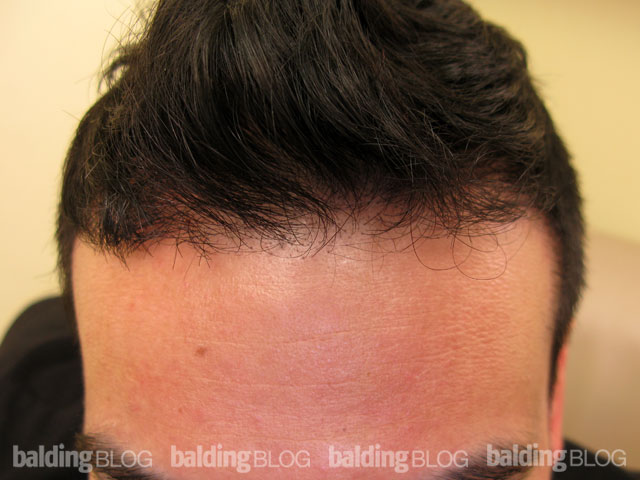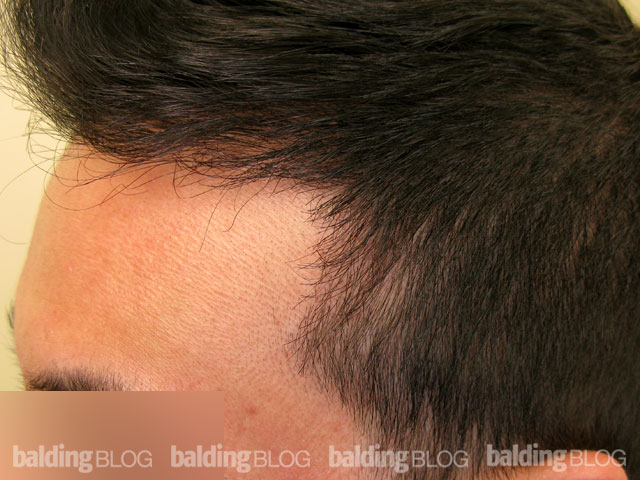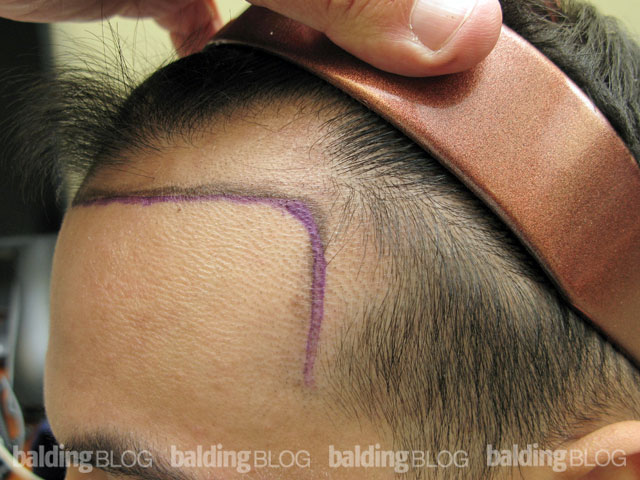 As regular readers might know since I’ve mentioned it in the past, I’m part of an email group of hair transplant doctors. We share clinical stories, exchange ideas, etc. There was an article in O Magazine about female hair loss and we were asked about percentages of female patients that are candidates for surgery. Dr. Robert Bernstein had said around 20%, but one physician in the group disagreed with him and stated that close to 80% of his female patients are surgical candidates! From my own personal observations, some doctors will perform surgery on the majority of female patients that come through their door, but in my opinion, that would just be taking advantage of these women. Ask the doctor you selected what percentage of the hair transplant practice is women. If the number is high (over 20%) then I would seek another doctor.
As regular readers might know since I’ve mentioned it in the past, I’m part of an email group of hair transplant doctors. We share clinical stories, exchange ideas, etc. There was an article in O Magazine about female hair loss and we were asked about percentages of female patients that are candidates for surgery. Dr. Robert Bernstein had said around 20%, but one physician in the group disagreed with him and stated that close to 80% of his female patients are surgical candidates! From my own personal observations, some doctors will perform surgery on the majority of female patients that come through their door, but in my opinion, that would just be taking advantage of these women. Ask the doctor you selected what percentage of the hair transplant practice is women. If the number is high (over 20%) then I would seek another doctor.
Every once in a while a doctor will say something completely outrageous, and without mentioning who the doctor is, I wanted to share my reply to the group of doctors with you all. It will likely ruffle some feathers, but it needed to be said:
***
I really don’t understand the answer from Dr. [name removed]. Dr. Bernstein and I have routinely performed miniaturization analysis of the entire ‘donor area’ of all women, quantifying the good hair and the poor hair. I feel that if a doctor does not do this, it would reflect poor medical judgment in diagnosis and possibly a lack of concern for the patient.
The miniaturization pattern is almost always the same when female hair loss impacts the donor area. Fully 80% of female hair loss patients have greater than 30% of their hair miniaturized in the donor area, and if it is 30% in the center of the donor area, miniaturization analysis as one moves laterally might rise (possibly 50% miniaturization in that same patient). The drop in donor density, particularly on the sides of the donor area, is a cardinal sign that the balding process has taken its toll on the donor area. If the surgeon harvests this hair, then the surgeon is moving ‘bad’ or impacted hair from the donor area. If, for example, the normal donor density is 2 hairs per square mm and the impacted hair in women is 30%, then the effective donor density is only 1.4 hairs per follicular unit, but this hair probably has a tendency to miniaturize further and that will only reduce the effective donor hair over time and with 30% miniaturization, the average hairs per follicular unit will be low. We see the same phenomenon in men with diffuse unpatterned alopecia (DUPA) and too many of these men have been transplanted only to face disaster not only in the recipient area with very poor yields, but the development of progressive see-through donor areas which are clearly surgically induced.
I have maintained, as has my student Dr. Bernstein, that moving bad hair from an impacted donor area in typical female hair loss patients produces poor yields. I have further maintained that doctors who do surgery on these women are confusing the principles we defined in our published articles and talks on follicular unit transplantation in men (not women), with their need for the doctor to pay their rent. I have no doubt that a solution to our marketing problem in this recession is to transplant more and more women, even if their donor area is inadequate. Women are often desperate for hair and they are easily talked into a transplant option, in fact they often push for it. Not doing a hair transplant, at times, takes great restraint on the part of the doctor, but the principles of our Hippocratic Oath should always be central in our thinking (I’m preaching to the choir of good doctors out there I am sure).
![]()
![]()





 As regular readers might know since I’ve mentioned it in the past, I’m part of an email group of hair transplant doctors. We share clinical stories, exchange ideas, etc. There was an
As regular readers might know since I’ve mentioned it in the past, I’m part of an email group of hair transplant doctors. We share clinical stories, exchange ideas, etc. There was an 
 I suppose anything is possible, but I doubt you’d really want to do this if you knew what the end result would look like. I have seen everything from transplanting armpit hair, pubic hair, and even beard hair to the scalp (I’ve not done these procedures, but have seen patients with them done).
I suppose anything is possible, but I doubt you’d really want to do this if you knew what the end result would look like. I have seen everything from transplanting armpit hair, pubic hair, and even beard hair to the scalp (I’ve not done these procedures, but have seen patients with them done). Doctors, when prescribing medications, stay with medications that are FDA approved for the particular condition they are treating. That is because the FDA gives its stamp of approval that the drug is safe and effective for the condition that it is being prescribed for. The doctors have some restrictions in the way they use their medical license when prescribing drugs and their insurance carriers will not cover them for drug use outside the FDA approved drugs, so if something went wrong, they are bare for insurance coverage.
Doctors, when prescribing medications, stay with medications that are FDA approved for the particular condition they are treating. That is because the FDA gives its stamp of approval that the drug is safe and effective for the condition that it is being prescribed for. The doctors have some restrictions in the way they use their medical license when prescribing drugs and their insurance carriers will not cover them for drug use outside the FDA approved drugs, so if something went wrong, they are bare for insurance coverage. Under the following circumstances, I would consider prescribing dutasteride before it is FDA approved to treat hair loss, but see the qualifier below:
Under the following circumstances, I would consider prescribing dutasteride before it is FDA approved to treat hair loss, but see the qualifier below: